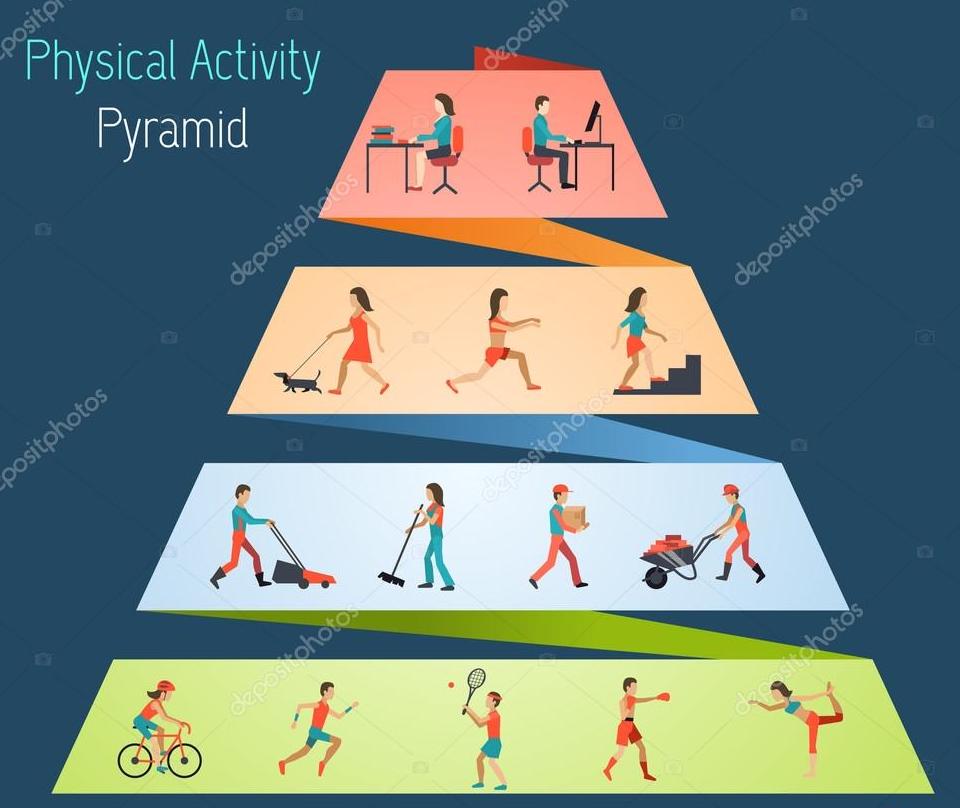4-5 min read
Are you struggling to maintain regular physical activity during the COVID-19 pandemic?
Are you unsure how COVID-19 might be affecting your health?
The ongoing international pandemic from the novel Coronavirus (COVID-19) continues to cause mass panic and public health concerns. As the COVID-19 cases rise, a simultaneous and alarming increase in the number of mental health conditions such as anxiety, depression and other stress-related disorders has been seen. During the COVID-19 pandemic, there has been a notable surge in insomnia and sleep disorders (20%), and psychological reactions such as anxiety and depression (16-28%) and self-reported stress (8-15%). Interestingly, a simulation model has even predicted an increased rate of unhealthy weight gain and obesity in children due to COVID-19. The public advisories from various health authorities, however, are still justifiably cautious and request individuals to minimize travel and stay-at-home to limit the viral exposure. These confinement guidelines, however, have unfortunately resulted in a decrease in Physical Activity (PA), exercise and have increased the physiological and psychological stress in individuals bound at home due to quarantine. The irony is in the fact that regular PA is known to significantly reduce the risk of viral infections, boost the immune, muscle and bone health, and lower the risk of chronic health conditions such as diabetes, obesity, hypertension and heart diseases which are most frequent comorbidities in COVID-19. Moreover, the negative psychological presentations of extended confinement including anxiety, confusion, anger and post-traumatic stress symptoms can be positively benefitted by regular PA. Disturbingly, a confinement period, as short as, 10 days can result cause immune suppression and alterations, while prolonged quarantine times can produce an inflammatory state in your body. The combined physiological and psychological influences in these unique circumstances can be damaging to your health. As the quarantine period extends into the later part of the year 2020, here are some helpful tips for managing your health and wellness. Also read our wellness blog to be a master of your own health.
Tips to increase PA and improve your overall health during COVID-19:
1. Exercise in natural environments whenever possible: Perform your choice of light-to-moderate intensity PA such as walking outside, either alone or with your family, on a daily basis.
- Find your closest parks and open spaces with least amount and chances of pedestrian traffic.
- To be safe, maintain > 4.9 feet (1.5 m) distance from others.
Evidence suggests that exercising in green spaces can be of significant benefit to your mental health as it reduces psychological fatigue, anxiety, depression, anger and increases the feelings of contentment. If exercising outdoors is not possible due to social distancing and self-isolation, indoor options can improve physical and mental health as well. Follow additional recommended guidelines below.

2. Find fun indoor exercise options: Use indoor options such as stairs, skip jump, active videogames and dance to boost your activity levels. Explore YouTube, challenge your friends via Fitbit or establish your own online community to exercise and motivate yourself and others around you. I know that I have found this to be extremely helpful!
3. Watch your screen and sitting time: Avoid stacking up on your sedentary time by standing up, stretching and walking around your home. For example, for every 60 min of sitting, perform 5-10 mins of structured movement. This is especially important for those with impaired circulation, diabetes, and other vascular issues.
4. Stay hydrated: Choose water over sugary drinks or alcohol. This is a tough one, as it is counter-intuitive! But some indoor environments can be dry and may exacerbate those who suffer with breathing difficulties.
5. What about vigorous intensity? Some recommendations suggest to avoid or be watchful of prolonged, vigorous-intensity exercise as this type of exercise can reduce the body’s resistance to viral and other infections in the short term.
Remember, that “Some activity is better than none, and more is better than less” (Dr. Ken Powell). Make the physical activity fun and stress-free to obtain physical and mental benefits – SIMPLY FIND WHAT WORKS FOR YOUR FAMILY! And, try to aim for the recommended PA guidelines of at least 30 min of moderate physical activity every day and/or at least 20 min of vigorous physical activity every other day, in conjunction with strengthening activities. I urge you to challenge yourself to achieve a combination of both! Like, share and comment on how you have been implementing these suggestions in your daily routine – this will help motivate others around you!
If you are not sure how to meet those? Watch for our upcoming blog on PA recommendations for everyone! Also, individuals with previous symptoms of illness or who are susceptible to chronic cardiovascular or pulmonary disease should seek advice from health care providers about when it is safe to exercise.
PLEASE NOTE: These guidelines have been developed by sport science researchers, medical professionals, and environmental physiologists with information combined from World Health Organization, American College of Sports Medicine and American & European space agencies frequently investigating confinement of human body in space.
Hina Garg, PT, PhD, NCS (Physical Therapist)
Citations:
Peijie Chen, Lijuan Mao, George P. Nassis, Peter Harmer, Barbara E. Ainsworth, Fuzhong Li. Coronavirus disease (COVID-19): The need to maintain regular physical activity while taking precautions. Journal of Sport and Health Science. 2020;9(2):103-104.
Gregor Jurak, Shawnda A. Morrison, Bojan Leskošek, et al. Physical activity recommendations during the coronavirus disease-2019 virus outbreak. Journal of Sport and Health Science. 2020;9(4):325-327.
An R. Projecting the impact of the coronavirus disease-2019 pandemic on childhood obesity in the United States: A microsimulation model. Journal of Sport and Health Science. 2020;9:302-12.
Rajkumar RP. COVID-19 and mental health: A review of the existing literature. Asian Journal of Psychiatry. 2020;52.
Morin CM, Carrier J. The acute effects of the COVID-19 pandemic on insomnia and psychological symptoms. Sleep medicine. June 2020.

I enjoy reading through your website. Thanks!|
Thank you for this comment, we will continue to add information on unique and interesting topics. Would love to know how you like them!